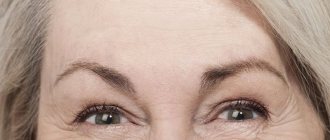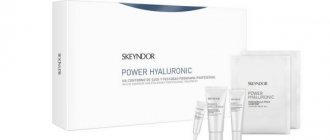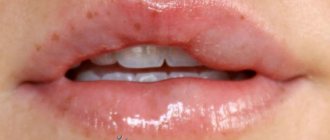Administration of drugs inside the scars
widely used in dermatocosmetology. Most often, 2 groups of drugs are used:
- enzymatic (enzyme) preparations based on the enzyme hyaluronidase
, - prolonged hormones glucocorticosteroids
.
Verapamil is very rarely used in the treatment of scars.
Enzyme preparations for injection into scars
The following drugs are used:
- Lidaza,
- Longidaza,
- Alidasa, Hyalidasa, Hyalasa, Hyasa, Hyason, Widasa, etc.
They use the enzyme hyaluronidase
, which:
- depolymerizes (breaks up) glycosaminoglycans ( the main component of the intercellular substance
), - increases the permeability of connective tissue,
- increases elasticity,
- inhibits collagen formation.
However, the use of the hyaluronidase enzyme has its disadvantages
:
- hyaluronidase instability ( unstable enzymatic activity
), - reactogenicity ( the ability to cause adverse reactions
), - allergenicity ( risk of developing allergic reactions
).
Longidaza is most often recommended
.
The drug Longidaza is formed by conjugation (connection) of the enzyme hyaluronidase
with an analogue of the immunomodulator polyoxidonium.
Polyoxidonium has its own properties
:
- immunomodulatory,
- antioxidant ( fights free radicals
), - detoxifying ( anti-poisoning
).
Thanks to the combination with polyoxidonium, Longidaza:
- more resistant to destructive and inhibiting (inhibiting activity) factors,
- lasts longer
- less allergenic,
- regulates the synthesis of inflammatory factors ( interleukins, tumor necrosis factor
), - stimulates the immune system.
Longidaza is used to treat hypertrophic and retracted
(peak-shaped) scars. Clinical studies have proven its effectiveness.
Before administration, Longidaza is diluted in 1.5-2 ml of liquid of your choice:
- saline,
- water for injections,
- 0.25% novocaine
(local anesthetic), - 1% trimecaine
(also a local anesthetic).
Longidaza is injected into scars
using a needle:
- for hypertrophic scars - papular (before the formation of nodules),
- for “peak-shaped” scars - perpendicularly downward to a depth of 2-4 mm.
The procedure is performed weekly. Usually 10-15 sessions are performed.
Long-acting corticosteroids
Prolonged (from the English long - long
) corticosteroids are long-acting glucocorticoid hormones.
They are highly effective in the treatment of hypertrophic and keloid
scars.
Mechanism
actions of corticosteroids:
- inhibit the release of cytokines ( inflammatory factors
) from leukocytes:
interleukins, β-interferon
, - suppress the formation of endothelial growth factor
and
tumor necrosis factor
, - stop the division of myofibroblasts
(these cells, when connective tissue is damaged, participate in healing by tightening the wound), - reduce the number of mast cells
(they are involved in the occurrence of allergic reactions by releasing histamine upon contact with an antigen).
The most common long-acting corticosteroids used to treat scars are:
When injected into scars, corticosteroids relieve itching and make scars softer and flatter. The number of injections depends on the rate of scar reduction. Typically, injections are given every 1.5-2 weeks.
cryodestruction of the scar shortly before the corticosteroid injection.
(
destruction of the rumen with liquid nitrogen
).
Very low temperatures cause swelling of the dermis and degeneration ( degeneration, reverse development
) of collagen fibers.
Liquid nitrogen is applied to the rumen for 30-60 seconds until persistent white frost
(
cold freeze
). After thawing, a corticosteroid is injected using a needle. Read more about this in the next topic Cryodestruction and microwave therapy.
Side effects
corticosteroids with long-term use:
- atrophy ( thinning
) of the skin, - hypopigmentation ( skin lightening
), - telangiectasia ( spider veins and spider veins on the skin
), - steroid acne,
- systemic ( general
) effect: menstrual irregularities, hypertrichosis (
hairiness
).
To reduce the risk of complications, corticosteroids are diluted 2-5 times
by using:
- physiological solution,
- 2% lidocaine
.
Such dilution reduces the risk of complications, but at the same time reduces the overall effectiveness of treatment.
Combination with pentoxifylline
A corticosteroid injected into the scar is often combined with pentoxifylline
, enhancing the effect of the corticosteroid.
Pentoxifylline has a number of effects
:
- destruction of fibrin threads ( fibrinolytic effect
), - reducing the size of scar tissue,
- inhibition of DNA activity of fibroblasts ( connective tissue cells that form the extracellular matrix and future proteins collagen and elastin
), - reduces the synthesis of inflammatory factors ( tumor necrosis factor and other cytokines
).
Combination of hormone and pentoxifylline
(in a ratio of 2 to 1) reduces the risk of side effects from corticosteroids. Injections are performed strictly within the scar, avoiding the mixture getting into the surrounding tissue.
- by infiltration ( layer-by-layer injection with the same needle at different depths
), - multiple injections in small doses until papules (nodules) with a diameter of 1 mm are formed evenly distributed over the surface of the scar.
Injections are performed only in the upper third of the dermis
. The bevel of the needle should be directed upward, which allows for better control of the volume and distribution of the injected drug. It is dangerous to inject the drug along the edge of the scar.
Injections are repeated after 7-10 days. As the scars decrease, the proportion of hormones is gradually reduced until complete withdrawal ( the ratio of hormone and pentoxifylline is reduced from 1:1 to 1:5
).
Further treatment of scars is carried out only with pentoxifylline
, which is injected over the entire surface of the scar in the form of papules with a diameter of 2-4 mm. The procedure is repeated every 5-7 days, for a total of 4-10 sessions.
Source www.happydoctor.ru
Everyone who has at least once suffered an open injury or been on the operating table has encountered the problem of scars. These defects do not go away over time and cause us inconvenience, both in personal and business spheres. Even a scar that minimally interferes with movement creates significant discomfort, constantly attracts attention to itself, and makes you think about yourself. Scars in visible places spoil our appearance and reduce our quality of life. But today this problem can be dealt with by significantly changing the condition of the scar.
According to medical classification, scars are divided into normotrophic, hypotrophic and hypertrophic. In addition, there is such a thing as a keloid scar.
A normotrophic scar is the best type of scar, which is formed after correctly applied sutures and a wound that has healed without problems. It looks quite aesthetically pleasing and does not protrude above the skin. You can smooth out the differences with neighboring areas using various cosmetic procedures.
A hypotrophic scar has a slight depression relative to the level of healthy skin. Its treatment is carried out by the introduction of special substances or through plastic surgery.
Hypertrophic scars rise above the skin level as a result of active proliferation of connective tissue.
The most difficult to treat are hypertrophic and keloid scars.
A keloid scar is a tumor-like formation of a juicy or red color. Typically, keloid scars form at the site of a puncture, injury, burn, surgery - where there was a violation of the integrity of the skin. Treatment of keloidosis is complicated by the fact that scars of this type do not decrease over time, but become larger, involving healthy skin.
The new drug LONGIDAZE helps to cope with keloid, hypertrophic and retracted scars after pyoderma, herbs, burns and operations. It is also used in the treatment of long-term non-healing wounds. The drug Longidaza has the ability not only to resolve keloid scars and sclerotic tissue, but also to suppress the growth of connective tissue when it is formed in excess.
Today it is possible to get rid of scars and improve the quality of life with the help of modern medical advances. The Russian Institute of Immunology of the Russian Academy of Medical Sciences has created a unique drug, LONGIDAZE, for the treatment of urological and gynecological diseases accompanied by connective tissue hyperplasia, serious skin complications after injuries, burns and operations.
In orthopedics, traumatology, surgery and cosmetology, LONGIDAZE can also be used to prevent pathological growth of connective tissue. Here, as in any situation of prophylactic drug administration, you need to weigh how high the likelihood of developing a pathological process is and how ripe the need for intervention is.
Until now, for more than 40 years, enzyme preparations have been used to prevent cicatricial deformation of the skin, which had a number of significant disadvantages.
LONGIDAZE effectively suppresses excessive growth of connective tissue, ensures the destruction of formed foci and stops the development of the inflammatory process - the cause of hyperplasia, that is, it acts at all stages of the development of the pathological process. Using this remedy, you can successfully treat keloid scars after injuries, burns, operations, as well as eliminate the negative consequences of inflammatory processes, prostatitis, pulmonary tuberculosis, and increase the bioavailability of antibiotics.
As a result of treatment with LONGIDAZA, patients experience significant improvement, manifested in the following indicators: reduction in the size of the scar and skin deformation in the scar area, subsidence of pain, paresthesia, itching, normalization of color, alignment of the scar in relation to unchanged skin.
Medical Center SM-Clinic:
Moscow, metro station “Voikovskaya” , st. Kosmonavta Volkova, 9/2. st. Klara Zetkin, 33/28
— metro station “Belorusskaya” , st. Lesnaya, 57, building 1
— Alekseevskaya metro station, VDNH , st. Yaroslavskaya, 4/8
Multiline phones:225−34−00, 777−48−49
Source www.medicus.ru
Properties of Longidase: stops the growth/spread of connective tissue; destroys existing areas of connective tissue accumulation; has an anti-inflammatory effect. It has a beneficial effect on facial skin at all stages of the formation and growth of various types of scars.
Treatment with a scar preparation is carried out according to the following scheme: the dry substance of Longidase is dissolved in 2 ml of liquid (your choice is saline solution, 1% solution of trimecaine (anesthetic), 0.25% solution of lidocaine, water for injection), injected by linear retrograde injection - the syringe needle is inserted into the scar tissue at an angle of 30 degrees, the needle is reversed, while simultaneously “injecting” the medicine. With this technique for administering Longidase, the needle should be positioned almost parallel to the scar, but there is another option for performing the injection. We are talking about a technique where the needle is inserted deep into the scar perpendicularly to a depth of a maximum of 4 mm.
Since the drug has a prolonged effect, the frequency of injection is 1 time per week for 4.5 months.
Read more in our article about the use of the drug Longidaza for scars.
Read in this article
What is the difference between lidase and longidase?
Adhesions (also called scars) are often the cause of female infertility. In addition to reducing the quality of life, they also cause obstruction of the fallopian tubes and displacement of the genital organs. Such things cannot but affect reproductive function.
Adhesions form after gynecological operations, abortions, as a result of a previous or untreated sexually transmitted infection, hypothermia, endometriosis and other organ diseases.
Modern medicine has learned to cope with the phenomenon of adhesions quite well. Doctors actively use drugs based on the enzyme hyaluronidase. This active substance breaks down hyaluronic acid (connective tissue consists of it), which leads to the gradual resorption of adhesions.
During the therapy and treatment of various diseases, including gynecological ones, doctors mainly use two drugs with hyaluronidase - Longidaza and Lidaza. To understand how these tools differ and how they are similar, you need to look at each.
It is always important to know: it is the responsibility of the attending physician to tell and explain in detail: Lidaza or Longidaza, which is better. You should always remember this and ask if necessary.
Medicine Lidaza
Lidaza is a domestic drug whose active ingredient is hyuluronidase (it is isolated from the testes of cattle). Lidaza is available in the form of an injection solution or powder.
For a long time, this drug was one of the most frequently prescribed for the treatment of adhesions. The enzyme hyalurdonidase, which is part of it, breaks down hyaluronic acid well, due to which adhesions are reduced. Consequently, the patency of the fallopian tubes is restored, and the chances of getting pregnant increase significantly.
The effectiveness of Lidaza has been proven in physical therapy when it is prescribed together with electropheresis. This method has been practiced for more than one year, and during this time, in most cases, patients showed positive dynamics. The course of such physiotherapy procedures usually ranges from 10 to 12 sessions.
Medical practice shows that there are practically no side effects from Lidaza treatment. The drug is well tolerated. To exclude allergies, a sensitivity test is always done before starting the course.
Despite its relative safety, Lidaza has a number of contraindications:
- pregnancy, lactation period;
- tuberculosis;
- cancer;
- inflammatory processes in the body;
- lung or heart disease.
Lip allergies: causes, symptoms and treatment
The causes of lip allergies are associated with the influence of various substances that increase the level of histamines in the body. This could be food, chemicals contained in makeup or cosmetic creams, germs, dust or wool. Allergies are considered one of the most common ailments today. More than 85% of the Earth's inhabitants suffer from various sensitizing factors.
The scientific name for lip allergies is “contact allergic cheilitis.” This is a disease of the skin, namely the red border of the lips, due to various irritants. The causes of lip allergies are very diverse. First of all, the reaction is provoked by all kinds of chemicals that are part of decorative cosmetics or hygiene products. Food products can also cause inflammation on the lips.
Less commonly, allergens can enter the body through various types of plastic (toothbrush) or through metal, for example, smoking pipes, wind musical instruments. Another reason that causes allergies on the lips is often weather conditions: wind, severe frost or direct sunlight.
The sudden appearance of an allergic reaction to any substance sometimes confuses a person: the symptoms have never been noted before, and suddenly they feel unwell. But usually there is an explanation for this fact. First of all, this is a decrease in the body’s immunity due to a recent serious illness. Long-term use of hormonal drugs and antibiotics also contributes to the disease. Also, the cause may be heredity (one of the great-grandmothers had a tendency to allergies). Frequent consumption of fast food and instant products also often provokes an allergic reaction.
The very first manifestations of allergies can easily be confused with herpes; they are very similar. The lips become swollen, covered with a slight rash and small cracks. Signs of allergies on the lips are:
Longidaza drug
Longidaza has been produced in Russia since 2005. This is not a generic, but an original medicine. The main difference between Longidaza and Lidaz is that the action of the former is significantly longer, while Longidaza does not affect healthy connective tissue in any way.
The medicine is sold in pharmacies in two forms:
- powder for the preparation of injections;
- suppositories (for rectal or vaginal administration).
Longidase has two active ingredients - the already familiar enzyme hyalurdonidase and also azoxymerabromide. Due to this combination, the positive effect of the drug on the body increases significantly. It has been clinically proven that Longidaza increases the effectiveness of antibacterial therapy, and it is also able to prevent the development of adhesions.
Cases when Longidaza should not be used:
- the presence of malignant tumors;
- children's age (up to 12 years);
- allergic reactions.
Use during pregnancy or breastfeeding is undesirable, since it is not yet known how the drug affects the child. Patients with serious diseases of the lungs, kidneys or heart should treat Longidase with caution.
It is not recommended to use Longidaza in combination with estrogens, salicylates and hydrocortesone. It is believed that such drugs reduce its effect.
Reviews on the choice of Longidase analogues
The use of drugs with proteolytic enzymes can help get rid of many diseases and avoid unnecessary surgical interventions. Therapy must be individualized. Taking into account the factors of age, condition, and degree of disease, a suitable medication is selected among analogues. Therefore, before starting treatment, it is important to consult a doctor, undergo some examinations and draw up a treatment regimen.
Source simptomov.com
Longidaza is a drug that is available in the form of rectal and vaginal suppositories, as well as in the form of injections. It is prescribed for the treatment of gynecological and urological ailments, and is also used for orthopedic diseases.
The medicine relieves inflammation, acts as an antioxidant, improves immunity and improves joint function. Longidaza is sold at a high price, so people often look for cheaper analogues. Substitutes exist both among Russian drugs and in the list of foreign drugs.
Comparing two drugs
It is indeed difficult to decide unambiguously on the question: Lidaza or Longidaza. After all, at first glance, these are almost identical medications that have the same active ingredient. In fact, this is not entirely true: Longidaza is considered a modern analogue of Lidaza.
A significant difference between the drugs is the amount of that same hyuluronidase. In Lidaza there are 64 units, and in Longidaza - 1500 or 3000 (in injection solutions or suppositories). It turns out that the effectiveness of Longidase is almost 47 times higher.
The form of release is of great importance: Longidaza is sold in suppositories, which provides certain advantages in comparison with Lidaza:
- can be used at home independently (under the supervision of the attending physician, who develops an individual dosage regimen);
- prolonged action - with the help of suppositories you can “faster” deliver the medicine to the affected organ.
Different composition of drugs: Lidase is actually one hyaluronidase, which is diluted in sodium chloride. Longidaza contains two active ingredients, so it has a number of additional properties: anti-inflammatory, antioxidants and immunomodulatory.
The main difference between Lidaza and Longidaza is the price. The cost of the two drugs differs by more than a thousand rubles: 370 and 1780, respectively. Perhaps this fact becomes decisive for most patients.
Read user reviews in the comments to the article. Every opinion is important to us!
Release forms, structural analogues and prices
The manufacturer of Longidase is a domestic pharmaceutical company (Russia, Moscow). For ease of use, there are several release forms and dosages:
- Suppositories for vaginal and rectal administration. Contains 3000 IU of active substance, cocoa butter is used as a substrate. The shape is oblong with one edge narrowed, the color is white, minor yellow inclusions and marbling are allowed, the smell is specific. Each candle is placed in a plastic cell, one blister contains 5 candles. Packages No. 5, 10 and 20 are available for sale.
- Lyophilisate for the preparation of solution for injection. Available in doses of 1500 and 3000 IU of lidase in ampoules or transparent glass bottles filled with a white hygroscopic porous mass. A yellowish tint and isolated lumps are allowed.
In our country, it is possible to purchase cheaper analogues of Longidaza suppositories, which will differ in price and composition, but have similar mechanisms of action and clinical effects. This medicine is original and does not have complete structural analogues.
What is better Longidaza or Lidaza?
Prevention and treatment of adhesions is a topic in gynecology that remains relevant to this day. Surgery, abortion, endometriosis, various diseases of the internal genital organs, etc. can lead to the development of adhesions in the fallopian tubes.
Currently, to prevent the occurrence of obstruction of the fallopian tubes due to adhesions, drugs based on hyaluronidase are used. Many women are interested in the question: is it better to use Lidaza or Longidaza and what is their difference? To answer the question reasonably, it is necessary to familiarize yourself with the features of the use of these drugs.
If you are in doubt about the choice of drug, consult your doctor before purchasing.
One of the most popular drugs for the treatment of adhesions in gynecology is Lidaza. This drug contains the enzyme hyaluronidase, which promotes the resorption of scars in the fallopian tubes, making them more elastic. The mechanism of action is realized due to the destruction of hyaluronic acid, which is present in excess in scars.
If the patency of the tubes is restored, then the chances of getting pregnant increase sharply. It is worth noting that, in addition to the resorption of scar tissue, the drug also increases the permeability of the smallest vessels.
Due to its pharmacological properties, Lidaza is successfully used not only in gynecological practice. It is used in orthopedics, surgery, ophthalmology and other areas of medicine. Under what pathological conditions would it be appropriate to prescribe Lidase:
- Adhesive process in the fallopian tubes.
- Diseases of the internal genital organs.
- Burn scars.
- Scars after surgery.
- Ankylosing spondylitis.
- Problems with joint mobility caused by excessive growth of connective tissue.
- Eye pathology (keratitis, retinopathy, etc.).
Contraindications
According to the official instructions for use, Lidaza has some contraindications. For what diseases or pathological conditions is it not prescribed:
- Hypersensitivity to the components of the drug.
- Oncological diseases, in particular malignant tumors.
- Inflammatory process in the acute stage.
- Serious problems with the lungs and heart.
- Bleeding from the lungs.
- Tuberculosis.
Pregnant and breastfeeding women are a group of patients for whom this drug is contraindicated.
Adverse reactions
As clinical practice shows, side effects when using this drug are extremely rare. An allergic reaction may develop. Sometimes there is some pain and hardening of the tissue at the injection site.
It is recommended to conduct a sensitivity test to the active substance of the drug before use. To do this, a minimum dose of medication (0.02 ml) is administered intradermally. If no side effects are noted, continue administration of the drug as prescribed by the doctor.
special instructions
As a rule, in gynecology this medicine is used in the form of suppositories and injections. At the same time, a physiotherapeutic procedure such as electrophoresis with Lidase is often used. Many years of application experience have proven the high efficiency of this method. The therapeutic course is approximately 10–12 sessions. As for interactions with other medications, most experts recommend not combining them with estrogens.
It is the responsibility of the attending physician to clearly explain to the patient that it is better to use Lidaza or Longidaza, and what is their difference.
Longidaza is considered a more modern analogue of Lidaza. However, this drug has a longer lasting effect. In addition to the proteolytic (absorbable) effect, it also combines antioxidant, immunomodulatory and anti-inflammatory properties.
Recent clinical studies have shown that Longidaza does not have a negative effect on normal connective tissue, but only destroys pathologically altered (scars).
In most cases, the medicine is quite well tolerated.
Considering the pharmacological effect of the drug, Longidaza has found wide use in various fields of medicine, including gynecology, surgery, urology, dermatology, pulmonology, etc. We list the main indications that are associated with the prevention and treatment of adhesions in the pelvis:
- Gynecological surgical interventions or manipulations.
- Artificial termination of pregnancy.
- Adhesions that have developed inside the uterus.
- Chronic pathology of the internal genital organs of an inflammatory nature (adnexitis, salpingitis and
- etc.).
- Obstruction of the fallopian tubes.
- Chronic endometriosis.
Contraindications
Like its analogue, Longidaza may not be prescribed to all categories of patients. Do not forget that the appropriateness of using any medicinal product or method is determined by the attending physician. In what cases is this drug contraindicated for use:
- Hypersensitivity to the components of the drug.
- Tumors.
- The period of bearing a child.
- Patients under 12 years of age.
Longidaza should be used with extreme caution in people with serious kidney, lung or heart problems.
Adverse reactions
The results of many clinical studies have shown that adverse reactions develop quite rarely. However, the development of an allergy cannot be ruled out if the patient has an increased sensitivity to the active substances of the drug, which he forgot to inform his doctor about.
If an allergic reaction occurs, you must immediately stop administering the drug and carry out symptomatic therapy.
special instructions
If the therapeutic dosage of the drug is observed, Longidaza does not worsen the course of the postoperative period. In addition, it is worth noting that it in no way interferes with the restoration of bone tissue. Can be used in complex therapy of diseases that are accompanied by pathological proliferation of connective tissue. With renal or pulmonary failure, it is recommended to use no more than once every 7 days.
Pregnancy is a contraindication, since there are no clinical data on studies in this category of patients. However, the drug is not known to cause fetal abnormalities. When used simultaneously with other drugs (for example, salicylates, hydrocortisone, estrogens, etc.), a decrease in the effectiveness of the active substance Longidase is observed. Dispensed in pharmacies without a doctor's prescription. Before purchasing, it is recommended to consult with a specialist.
Cheaper analogues in the form of candles
Suppositories are the most convenient form of use of drugs containing proteolytic enzymes, since they can be used in seriously ill patients. A huge advantage is also the creation of maximum concentration of the substance in target organs when introducing a suppository through the vagina or rectum.
Polyoxidonium
produces several types of suppositories with proteolytic enzymes. An analogue of Longidase in suppositories from this manufacturer is Polyoxidonium. This drug is also available in tablets and lyophilisate. Its effectiveness is confirmed by many years of experience and a huge number of reviews from our compatriots, and the price compares favorably with imported analogues.
According to the international pharmaceutical classification, it belongs to the group of immunostimulants, and its non-proprietary name is similar to the active substance - azoximer bromide. The scope of application is determined by the following clinical properties of the drug:
- antioxidant;
- antiproliferative;
- anti-inflammatory;
- immunomodulatory.
The mechanism of action is a regulatory effect on cells of the immune system, in particular phagocytes, macrophages, as well as stimulation of antibody production due to the activation of B lymphocytes.
The scheme of application depends on the form of release:
- Candles. They can be administered into the vagina or rectum daily, and also on the recommendation of a doctor, depending on the indications, once or twice a week. Most often they are prescribed for exacerbation of infections of the reproductive and urinary system (vaginitis, cystitis, urethritis), inflammatory bowel diseases (colitis, proctitis), to activate repair and healing processes in case of extensive burns and injuries.
- Pills. Intended for resorption and/or oral administration. The most common indications for their use are ARVI and inflammatory diseases of the respiratory system. The daily dose is selected individually and divided into 2 doses.
Lyophilisate for preparing a solution. The prepared solution can be used for intravenous and intramuscular injections, locally intranasally and sublingually. The dose is calculated taking into account the weight and age of the patient; physiological sodium chloride solution or sterile water for injection is used as a solvent.
Polyoxidonium in this form of release is prescribed for the treatment of acute inflammatory diseases of the respiratory system, digestive tract, to stimulate the immune system, and in the development of acute allergic reactions.
This medicine is used in pediatrics in the form of a lyophilisate from 3 months, suppositories - from 6 years, and tablets after 3 years. Pregnancy, breastfeeding, acute and chronic liver and kidney failure are contraindications to the use of any of the forms.
Biostrepta
The combined antithrombotic drug is produced by the Polish company Biomed Warsawa in the form of suppositories for rectal administration. The enzymes streptokinase (15,000 IU) and streptodornase (1,250 IU) included in the composition have not only a fibrinolytic effect, but also eliminate inflammation, improve microcirculation and facilitate access of other drugs to target organs.
The basis in the production of these suppositories is Witepsol, which is the most modern suppository base and is a mixture of solid fats with a low hydroxyl number. The shape of the candles resembles a cylinder with one cone-shaped end, the color is white or cream, and there is no smell.
It is used in gynecology to eliminate signs of inflammation of the appendages and uterus, and there is also experience of use in the fight against tubal factor infertility. In surgery and proctology, it is most widely used in the treatment of acute and chronic hemorrhoids, proctitis, colitis, and pararectal fistulas.
It is prohibited for pregnant women, nursing mothers, and children under 16 years of age, according to the manufacturer’s official instructions. Given the ability of this medicine to increase bleeding, the use of Biostrepta should be avoided in persons with coagulation disorders.
Treatment is usually well tolerated. No cases of overdose have been recorded. However, if it comes into contact with damaged skin or mucous membranes, itching, discomfort, and redness may occur. In this case, treatment is canceled.
Usually Biostrepta is prescribed for 10-12 days. In the first three days, 1 suppository is administered three times a day, then gradually switch to a single dose. The drug should be protected from exposure to direct sunlight; optimal storage conditions are in the refrigerator at a temperature of +2 to +8 C.
Dystreptase
These suppositories belong to the group of combined enzymatic antithrombotic agents, which corresponds to the International Anatomical Therapeutic Classification. A special feature of this medicine is the presence of two active components that enhance each other’s effect. Each suppository contains 15,000 IU of streptokinase and 1,250 IU of streptodornase. Mineral oils and solid fat are used as a base. The suppositories are cylindrical in shape, narrowed on one side for ease of insertion. The color is white, there is no specific smell.
The mechanism of action is associated with the activation of plasminogen and its conversion to plasmin, which has fibrinolytic properties and dissolves blood clots. The dissolution of dead cells, as well as tissue breakdown products, is achieved due to the ability of streptodornase to destroy proteins and nucleic acids. In this case, there is no negative effect on living cells.
Among the main indications for use are the treatment of inflammation of the pelvic organs (endometritis, salpingo-oophoritis), intestinal pathologies (colitis, proctitis), and elimination of symptoms of hemorrhoids. There are studies that indicate the effectiveness of using Dystreptase to prevent adhesions after surgery.
According to the instructions, these suppositories should not be used by pregnant women, nursing mothers or children. Contraindications include blood clotting disorders and individual intolerance to the components. It is necessary to avoid contact of the candle with damaged areas of the skin and mucous membranes.
Usually 1 suppository is prescribed 3 times a day with a gradual reduction in the frequency of administration to 1 r/day. The duration of treatment should not exceed 10-12 days. Dystreptase is sold in packages No. 6 with a prescription. To preserve the physical and chemical properties, these suppositories must be stored in the refrigerator.
Which drug should I choose?
So is it better to use Lidaza or Longidaza? What is the difference between the drugs? We can immediately say that the principle of action of both drugs is absolutely the same. However, there is a certain peculiarity. Lidaza is considered a budget option for the treatment of adhesions in gynecological practice. At the same time, Longidaza is a modern analogue of Lidase, which has a longer activity and some additional pharmacological properties (antioxidant, immunomodulatory, anti-inflammatory).
The effectiveness in terms of scar tissue resorption is approximately the same. Side effects for both drugs, as a rule, occur extremely rarely and are limited to allergic reactions. Methods of application are also similar. Their significant difference is the price. Today, 10 ampoules of Lidaza can be purchased for 350 rubles. Whereas 10 Longidase ampoules cost about 1,600 rubles. In addition, the price for a more modern analogue may be even higher, depending on the pharmaceutical manufacturer.
In standard preventive cases, most specialists get by just fine with the cheaper drug Lidaza. If an advanced pathological process is observed and there are still signs of inflammation, they resort to prescribing more expensive medications. In addition, some patients claim that Lidaza injections are much more painful than Longidaza injections. In fact, this point should be clarified. If the drug is diluted with novocaine, and not with an isotonic solution, then both of these drugs are administered almost painlessly.
Summarizing all of the above, we can conclude that if you have the opportunity, purchase Longidaza. However, if this is not possible, then Lidaza is not the worst alternative.
Instructions for use
According to the instructions for use, Longidaza suppositories are prescribed for rectal or intravaginal administration once a day at night in a course of 10-20 suppositories. For rectal administration, it is recommended to administer the suppository after bowel movement. For intravaginal administration, it is administered in a lying position.
Recommended treatment regimens for adults:
- Gynecology: 1 suppository every two days - 10 injections.
- Dermatovenereology: 1 suppository every one to two days. 10-15 candles per course.
- Surgery: 1 suppository every two to three days. There are 10 candles per course.
- Pulmonology and phthisiology: 1 suppository every two to four days. There are 10-20 suppositories per course. Maintenance treatment – 1 suppository once a week for 3-4 months.
- Urology: 1 suppository after 1 day, 10 injections, then after 2-3 days – another 10 injections.
Depending on the type of disease, degree, severity and duration of its course, the treatment regimen can be adjusted.
The sworn enemy of nail fungus has been found! Your nails will be clear in 3 days! Take it.
| How to quickly normalize blood pressure after 40 years? The recipe is simple, write it down. |
| Tired of HEMORRHOIDS? There is an exit! It can be cured at home in a few days, if necessary. |
| The presence of worms is indicated by the SMELL from the mouth! Drink a drop of water once a day... |
Characteristics of Longidaz
This is a drug with enzymatic properties, it has a prolonged effect, immunomodulatory, chelating and anti-inflammatory.
The drug is presented in the form of candles with the scent of cocoa powder, cone-shaped. Consists of bovhyaluronidase azoximer in an amount of 3000 IU, an additional component is cocoa butter.
Prolonged effects on the body are achieved through the covalent binding of enzymes to polymer carriers that have physiological activity. The drug also exhibits antifibrotic activity, the acute stage of the inflammatory process becomes less pronounced, and the synthesis of inflammatory mediators increases or decreases. The humoral immune response and the body's resistance to infectious processes are stimulated.
The antifibrotic ability of this drug occurs due to the conjugation of hyaluronidase with the carrier, and this, in turn, increases the resistance of the enzymes to denaturing effects. The activity of Longidase enzymes has the ability to persist when the temperature rises to +37°C for 23 days, in contrast to native hyaluronidase, which is active for just over a day under the same conditions.
The active ingredients in the drug do not disrupt the normal state of connective tissue, but act selectively on the area of fibrous lesions. Longidaza does not have mutagenic, teratogenic, or carcinogenic properties and is well tolerated by patients.
The drug is used for the complex treatment of diseases associated with the proliferation of connective tissue.
- Gynecological diseases: chronic inflammation of endometrial tissue, infertility associated with tubal obstruction, adhesions in the pelvis.
- Urological diseases: chronic inflammation or benign growth of the prostate, cystitis of interstitial origin, surgical intervention on the bladder, ureter, as a preventive measure for the appearance of scar changes.
- Dermatovenerological diseases: scleroderma manifestations of a limited location, prevention of the formation of fibrosis in diseases of an infectious nature with sexual transmission.
- Diseases in phthisiology and pulmonology: interstitial pneumonia, fibrotic manifestations as a result of pneumonia, tuberculosis of the lungs, inflammation of the pulmonary alveoli, pleurisy.
- Surgical diseases: poorly healing wound surfaces, prevention of adhesions as a result of abdominal surgery.
Longidaza does not have mutagenic, teratogenic, or carcinogenic properties and is well tolerated by patients.
Side effects occur rarely and manifest themselves in the form of local allergic reactions, redness, swelling, itching.
Contraindications for use:
- bleeding from the lungs with hemoptysis;
- oncological formations;
- vitreous hemorrhage;
- severe kidney damage;
- pregnancy period;
- breast-feeding;
- age up to 12 years;
- allergic manifestations to the components of the drug.
Characteristics of Lidaz
The medicine belongs to a group of enzymes obtained from the testes of cattle. The product is made in the form of a substance for injections and suppositories.
The effect of the drug is to dissolve the component of the connective tissue substance - hyaluronic acid, making it less viscous, improving the permeability of tissues and blood vessels, the movement of fluid in the spaces between tissues becomes easier, tissue swelling decreases, scar tissue flattens, joint movements increase, contractures become less .
Indications for use:
- Proliferation of scar tissue after injuries and operations.
- Long-term non-healing ulcerative surfaces.
- Contractures, movement disorders in the articular surface.
- Osteoarthrosis, spondyloarthritis, lumbar disc damage.
- Tenosynovitis, which has a chronic course.
- Damage to soft tissues in the form of a hematoma, as a stage of preparation for plastic surgery for scar lesions.
- Myocardial infarction.
- Tuberculosis of the lungs, inflammation of the upper and lower respiratory tracts with obstructive phenomena.
- Rhinitis of allergic nature.
- Nerve and plexus injuries.
Lidase is used to eliminate long-term non-healing ulcerative surfaces.
Also used for more effective penetration of subcutaneous and intramuscular drugs.
Allergic reactions and irritation at the site of application may occur.
- Intolerance to the components of the drug.
- Recent hemorrhages.
- Tuberculosis, bleeding from the lungs, malignant neoplasms, hemoptysis.
- Taking hormonal drugs from the estrogen group at the same time.
- Pregnancy.
- Lactation.
Inexpensive substitutes for injections
If Longidase is not available in the pharmacy, financial resources are limited, or if adverse reactions develop, you can use analogues of this medicine, which are also available in the form of a powder concentrate.
Ronidaza
The enzyme preparation, which has the international nonproprietary name Hyaluronidase, is a powdery mass that contains hyaluronidase, a proteolytic enzyme with the ability to destroy mucopolysaccharides. The therapeutic effect is due to an increase in the permeability of vascular walls, as well as the elimination of swelling and a decrease in the density of connective tissues.
The drug is prescribed as an adjuvant therapy to improve the delivery of active substances to target organs. However, in the presence of infections of bacterial origin, as well as tumors of various localizations, you should refrain from therapy using Ronidase.
Before intramuscular or intravenous administration, add 1-2 ml of solvent (physiological saline solution or sterile water for injection) to the vial with the enzyme and mix in a circular motion until a homogeneous liquid is formed. The duration of therapy, frequency and method of administration of Ronidase are determined by the attending physician, taking into account the age, weight and condition of the patient's body. At the moment, the drug is not on sale, as re-registration is required.
Liraza
An immunopreparation with proteolytic activity is produced domestically in glass bottles with a tight rubber stopper (packages No. 5 and 10). INN – Hyaluronidase. Each bottle contains a homogeneous powdery porous mass of white color with a creamy tint, odorless. The active substance for the production of this medicine is obtained by processing material from the testes of cattle.
This drug is capable of destroying connective tissue fibers, as a result of which the permeability of capillaries and surrounding tissues increases and the outflow of interstitial fluid improves.
The main mechanism of action is the activation of the breakdown of mucopolysaccharides, in particular hyaluronic acid.
In accordance with the instructions for use provided by the manufacturer, Lyraza is effective in the treatment of the following pathologies:
- hyperproliferation of cartilage tissue, which makes movement difficult;
- systemic connective tissue diseases (scleroderma);
- diseases of the musculoskeletal system (osteoarthrosis, ankylosing spondylitis);
- hereditary and congenital contractures;
- scars of various origins;
- lung diseases with the development of obstructive and hyperproliferative syndromes (cystic fibrosis, tuberculosis);
- rheumatoid arthritis (including juvenile);
- hydrocephalus;
- myocardial infarction and ischemic stroke;
- in neurology to eliminate inflammation of nerve trunks and plexuses;
- in ophthalmology for retinopathy, hemophthalmia;
- in aesthetic cosmetology to improve skin condition.
- blood clotting disorder
- acute inflammatory diseases of infectious etiology,
- taking hormonal drugs (COCs, estrogens).
There are restrictions for the use of Lyraza. The main ones:
Lidaza-Belmed
The medication is produced in the Republic of Belarus. Available in 5 ml glass bottles containing 64 IU of hyaluronidase. According to the modern pharmaceutical classification, Lidaza-Belmed belongs to the group of drugs that have proteolytic and fibrinolytic activity.
The mechanism of action is due to the ability of hyaluronidase to destroy polysaccharides into simple components, which reduces the density of connective tissue. The main area of application is orthopedics and traumatology. Lidaza-Belmed effectively eliminates joint contractures caused by hyperproliferation of connective tissue. Indications for use also include arthritis and arthrosis, neuritis, plexitis, and scars. Lidase can be used as a combination therapy to improve the absorption of drugs that are administered subcutaneously and intramuscularly.
Prescribing this drug to pregnant and lactating women is prohibited according to the instructions. Contraindications include acute infections, tumors, and increased bleeding.
The resulting solution can be administered in the following ways:
Among the undesirable reactions, the development of urticaria, skin itching, and headache is possible. If the injection technique is violated, injection infiltrates and abscesses can form.
An overdose is accompanied by a violation of the general condition of the body, weakness, dizziness, nausea and vomiting, as well as a clotting disorder.
Laprote
An original drug that does not have an INN. According to the anatomical and therapeutic classification of the latest revision, it belongs to the group “V03A Other therapeutic drugs”.
The powder for preparing the solution contains a polyfunctional glycoprotein, which is obtained from breast milk. It has pronounced detoxification and antioxidant properties, and also has moderate anti-inflammatory and immunomodulatory effects. Lactoferrin is an important factor in cellular immunity, which makes it possible to fight infections of bacterial, viral, and fungal origin.
The most common indications for use are infectious diseases, as well as intoxication in cases of impaired detoxification and excretory function of the kidneys and liver. Lactoferrin should not be used by persons who have a history of allergic reactions to protein preparations. There is no experience of use in children and women during pregnancy and lactation.
There are two ways to administer this drug:
- Intravenous. Saline solution is used as a solvent in a ratio of 1 bottle (50 mg of lactoferrin) per 250 ml. The rate of administration is 1-3 ml per minute. 1-2 infusions are given per day. The minimum course is 5 days.
- Endotracheal. To prepare the required solution, a bottle of powder (50 mg) is diluted with 50 ml of sodium chloride. It is necessary to inject 1-3 ml of the prepared solution through a special tube at intervals of 120 minutes for 2-3 days, then switch to intravenous administration.
No cases of overdose have been recorded. During treatment, the following undesirable reactions may develop:
- low-grade fever;
- chills;
- headache;
- weakness, sleep disturbances;
- nausea.
Reviews from doctors and patients
Miroshnichenko V.P., gynecologist, Saratov
Lidaza and Longidaza are enzyme preparations that have antioxidant, immunomodulatory and anti-inflammatory effects. I use Lidaza and Longidaza in the treatment of adhesions and inflammation in the pelvic organs; the drugs are highly effective and have virtually no side effects. When exposed to a bacterial infection, I prescribe antibiotics together.
Natalya, 45 years old, Moscow
Lidaza was prescribed after an injury, which resulted in contracture of the hip and knee joints and limited mobility in these places. I completed the course of treatment with the drug 2 times, I liked the effect, movements in the joints became less painful, and greater mobility appeared. I am satisfied with the drug, I recommend it for use by those who have such problems.










